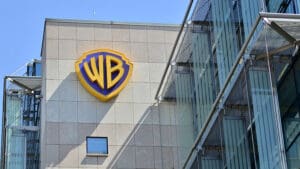Choosing the right traditional radiators can feel a bit tricky at times. Many of us spend hours researching to figure out what sets budget-friendly options apart from high-end boutique designs.
In this guide, we’ll look at materials, styles, heat output, and more to help you make an informed choice. Read on to see which option suits your home best!
Key Takeaways
Budget radiators are affordable and practical, using basic materials like steel, with limited designs and heat output ranging from 1001 to over 8000 BTU.
Boutique radiators use premium materials like cast iron, offer custom finishes (e.g., brass or gold), sizes up to 2001mm+, and can reach over 10,000 BTU for larger rooms.
Budget models lack customisation and focus on standard options; boutique ones provide superior craftsmanship, hand-finishing, and unique styles like ornate patterns.
Prices range widely: budget radiators start at £41 while boutique models can go up to £1,729 depending on features such as durability or design flexibility.
Choosing a radiator depends on your needs budget works for simplicity; boutique adds long-term value with advanced quality and aesthetics.
Key Features of Budget Traditional Radiators
Budget traditional radiators are simple and get the basic job done. They use standard materials and focus on heating without breaking the bank.
Basic material quality
Most budget traditional radiators use steel. This material is lighter and cheaper than cast iron. While it’s durable enough for basic needs, it lacks the heavy-duty feel of premium options like cast-iron column radiators.
A standard example is a 600 x 249mm White Horizontal Traditional 2 Column Radiator priced at £79.99.
Finishes are limited to basics like white, anthracite, or black. There’s no customisation or hand-finishing involved in these models either. They meet functional needs but offer little in variety or refinement.
Limited design options
Budget traditional radiators stick to simple designs. They focus on popular sizes and styles for practicality, not fancy finishes. For widths, they range between 0mm–300mm in 182 options; heights offer 52 choices within the same range.
That’s not much variety compared to boutique models.
We see limited colours like white, black, anthracite, raw metal or pastels. Odd shapes or intricate designs are hard to find here. Horizontal and vertical options exist but stay standard without ornate details.
Most panel types fall into double or triple columns only. Customisation? Nearly non-existent!
Standard heat output
Heat output in budget radiators ranges widely, between 1001 to over 8000 BTU. These models cater to standard room sizes and typical insulation levels. Their focus leans more on practicality than advanced heat retention features.
The wattage for these options starts at 0–500, with about 169 items available in this range. Those needing higher power have up to 59 models exceeding 5000 watts. They rely on basic thermal conductivity through hot water pipes and convection to distribute heat evenly across the space.
Characteristics of Boutique Traditional Radiators
Boutique radiators are all about elegance and top-notch quality. They bring style and function together, creating something truly special for your home.
Premium materials and craftsmanship
Cast iron sets boutique radiators apart. It comes from foundries in Europe and China, giving each piece strength and charm. This material stores heat well, keeping rooms warm even after the heating is off.
That longevity saves energy while adding comfort.
Every designer radiator undergoes hand-finishing for a polished look. Some even feature ornate details that boost home style. Each one gets inspected for quality and performance, ensuring it meets high standards.
These radiators are more than heaters; they’re lasting investments in beauty and durability.
Customisable finishes and sizes
We love how boutique radiators let us pick from so many finishes. From polished bare metal to bronze, brass, copper, or even gold, there’s something for every style. If bold colours catch your eye, options like black, blue, yellow or custom RAL paints are also up for grabs.
Some brands match their finishes to well-known paint makers like Farrow & Ball and Little Greene. It’s like painting a fresh canvas but with heat!
Sizes are just as flexible. The Beaumont Rococo Classique Cast Iron Radiator offers 76 sizes in total with 12 finishes to boot. Need something smaller? The Lux Heat Horizontal Column model starts at £202 and comes in 29 size choices paired with 23 stunning shades.
Heights can go beyond 2001mm if needed; widths stretch over that too! You won’t find cheap designer radiators offering this much freedom anywhere else!
Enhanced heat efficiency
Boutique traditional radiators often outperform budget options due to their materials and design. Cast iron models retain heat longer after switching off the system. This material’s density slows cooling, keeping rooms warm for extended periods.
Large surface areas also boost heat transfer, allowing a better flow of warmth across spaces.
Some boutique radiators can deliver over 10,000 British Thermal Units (BTU), making them ideal for larger or high-ceilinged rooms. These premium pieces are favoured by architects and heating experts handling older properties where consistent heating matters most.
Advanced craftsmanship ensures efficiency without compromising style—true warmth with sophistication!
Comparing Durability and Longevity
Cast iron radiators stand the test of time. Their durability is unmatched, making them a smart long-term choice. All models come with a 10-year warranty, providing confidence from day one.
The material resists wear and retains heat longer than other options. This ensures warmth remains even after turning off the heating, helping to save energy in the process.
Every boutique radiator undergoes a quality check by experts before leaving the shop. These are crafted to last and perform reliably for years to come, adding lasting character to homes in the process.
Vintage restorations demonstrate how well they endure over decades. They’re an investment worth every penny for both period properties and modern spaces alike!
Design and Aesthetic Differences
Some budget radiators stick to plain, predictable designs. They prioritise function but rarely add charm to a room. Boutique models turn heads with their intricate details and artistic flair.
Options like the Beaumont Rococo Classique stand out with ornate cast iron patterns that suit Victorian terraces or National Trust properties.
We enjoy the freedom boutique styles offer. Custom finishes, including shades inspired by Farrow & Ball, help create cohesive interiors. Antique brass or pewter thermostatic valves complement these designs perfectly.
Bold colours like blue or copper let us match radiators to modern decor while preserving timeless appeal. These are more than heaters; they’re statement pieces enhancing both warmth and style in any home.
Cost and Value Comparison
Let’s break down the cost differences and show the value of budget versus boutique traditional radiators in a simple table, so it’s easier to see where your money goes.
We’ve gathered a range of prices to help you make sense of the spectrum. Here’s how budget and boutique traditional radiators stack up on cost and value:
Type
Example
Price
Key Value Points
Budget
Planet Radiators 2 Column Horizontal Radiator
£41
Affordable option; basic materials; standard designs
Boutique
3 Column Cast Iron Radiator (450mm)
£201.60
Premium cast iron; durable; classic aesthetics
Boutique
4 Column Cast Iron Radiator (810mm)
£249.60
Higher heat output; superior build; vintage appeal
Boutique
Cast Iron Radiator
£134.00
Available in 76 sizes; 12 finishes; elegant design
Mid-Range
Horizontal Column Radiator
£154.00 (on sale from £244)
Balanced cost; versatile design; modern style
Boutique
Column Antique Brass Vertical Radiator
£331.00
Antique finish; vertical space-saving; distinctive look
Boutique
Horizontal Antique Brass Radiator
£222.00
Horizontal design; sturdy; timeless finish
High-End
Top-tier boutique radiators
Up to £1,729
Custom-made; unbeatable quality; ultimate luxury
From £41 up to £1,729, there’s a radiator for every need and budget. Budget models focus on practicality. Boutique ones add layers of refinement, flexibility, and craftsmanship. It all comes down to what fits your room, preferences, and wallet best.
Factors to Consider When Choosing
Choosing the right radiator can feel like a tough decision, especially with so many options. We’ve outlined key factors to help make it easier for you.
Room Size and Heat Needs
The size of your room decides how much heat you need. Use a BTU calculator to match the flow of heat to the space’s requirements.
Material Quality
Different radiators use materials like steel, iron, or aluminium. Boutique options often have higher-grade materials, which last longer and perform better.
Design Options
Budget models stick to basic styles, while boutique ones offer customisable finishes, unique colours, and sizes to suit your decor.
Heat Output
Think about how well a radiator heats up your room. Higher quality radiators are crafted for better efficiency and warmth distribution.
Durability
Premium models tend to handle wear and tear better than budget-friendly alternatives because of stronger craftsmanship.
Space Needed for Installation
Measure carefully before buying! Radiators vary in height and width, ranging from 0–2001mm+. Make sure you choose one that fits your spot perfectly.
Cost vs Value
Cheaper isn’t always better long-term. A boutique radiator may cost more upfront but could save money with lower maintenance over time.
Extra Accessories Available
Look into accessories like valves or heating elements for added functionality Planet Radiators offers plenty of extras for all needs.
Delivery and Support Perks
We all love free perks! Many brands include free UK delivery and price matches on most products plus award-winning support 24/7 online.
Make these points part of your checklist!
Conclusion
Budget and boutique traditional radiators each serve their purpose. Budget options keep things simple and affordable. Boutique ones offer luxury, style, and durability. Both works to warm your space, but the choice depends on what matters most to you: cost or elegance? Either way, there’s something for everyone.
FAQs
What’s the main difference between budget and boutique traditional radiators?
Budget radiators are often simpler in design, using basic materials to keep costs low. Boutique options focus on premium finishes, intricate details, and higher craftsmanship.
Are boutique traditional radiators worth the extra cost?
If style is important or you want a radiator that adds character to your space, a boutique option might be ideal. Budget models are better for practicality and tighter budgets.
Do budget radiators perform as well as boutique ones?
Performance depends more on size and heat output than price tag. Both types can heat efficiently if chosen correctly for your room size.
Can I tell them apart just by looking?
Yes, usually! Boutique designs often feature elegant shapes or polished finishes that stand out. Budget models tend to have plainer looks with fewer customisation options.
Read more:
Can You Spot the Difference Between Budget & Boutique Traditional Radiators?










